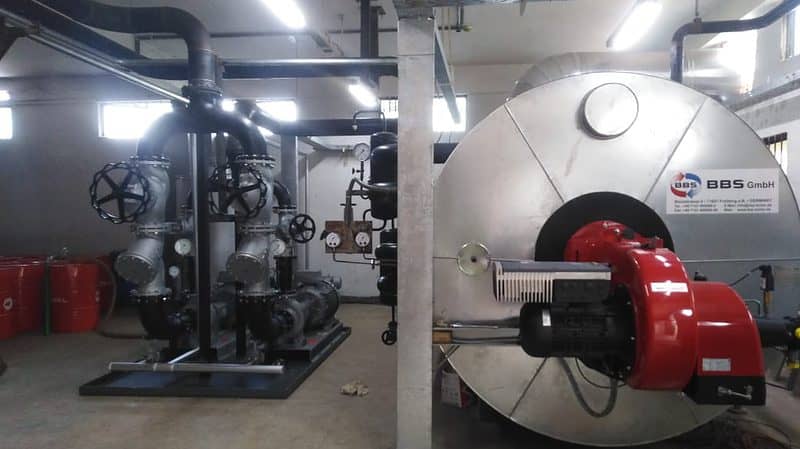Heat transfer oil is a specially formulated oil used for heat transfer applications. Heat transfer oil has high thermal conductivity and low viscosity, which make it ideal for use in thermal boilers, heat exchangers, radiators, and other heat transfer devices. Heat transfer oil is also non-flammable and has a high flash point, high thermal conductivity, and low viscosity, which makes it ideal for use in boilers, heat exchangers, radiators, and other heat transfer devices. Heat transfer oil is also non-flammable and has a high flash point, making it safe to use in high-temperature environments.

Application of Heat Transfer Oil
Heat transfer oils are used in a variety of industries and applications, including the following:
-Textile Industry
-Paper industry
-Steam Production
-Timber Industry
Heat transfer oils are available in a variety of formulations, including synthetic, natural, and mineral-based oils.
Why Heat Transfer Oil 32:
There are many different types of heat transfer oils on the market, but not all are created equal. Heat transfer oil 32 is one of the most popular and effective options available and for a good reason. Here’s a look at why heat transfer oil 32 is often the best choice:
1. It has a high flash point:
Heat transfer oil 32 has a flash point of 360 degrees Celsius, which is significantly higher than the flash point of most other oils. This means that it can withstand higher temperatures without boiling or catching fire, making it a safer option for use in high-temperature environments.
2. It has a low pour point:
The pour point of a heat transfer oil is the temperature at which it starts to solidify. Heat transfer oil 32 has a pour point of -15 degrees Celsius, meaning it can be used in relatively cold environments without issue.
3. It has excellent thermal stability:
Heat transfer oil 32 is designed to withstand long-term exposure to high temperatures without breaking down. This makes it an ideal choice for use in heat transfer applications where the oil will be heated regularly.
4. It has low toxicity.
Heat transfer oil 32 is considered to be non-toxic, making it a safer option for use around people and animals.
5. It is biodegradable:
Heat transfer oil 32 is made from renewable resources and is biodegradable, making it an environmentally friendly option.
Best Fluid for Heat Transfer System
Mobiltherm 605
Mobiltherm 605 heat transfer oil is a high-performance heat transfer fluid designed for use in closed-loop heat transfer systems. This Exxonmobil company oil provides excellent heat transfer performance and thermal stability over a wide temperature range. It is also highly resistant to degradation and corrosion. The oil is available in a range of viscosity grades to suit the specific needs of your application. Whether you need a heat transfer fluid for industrial or commercial use, Mobiltherm 605 is an excellent choice. Its viscosity index is 100 & can properly work in bulk oil temperatures up to 315°C
Therminol 66
Therminol 66 is a heat transfer oil that is used in a variety of industries and applications. It is a synthetic, high-performance heat transfer fluid that provides superior heat transfer performance and thermal stability. Therminol 66 is designed for use in systems where heat transfer fluids are subject to thermal degradation, fouling, and corrosion. It offers excellent heat transfer efficiency, low vapor pressure, and low pour point. Therminol 66 is also non-toxic, non-flammable, and has a low environmental impact. As a result, it is an ideal heat transfer fluid for use in a wide range of industries and applications. It can support bulk oil temperatures up to 345°C. Therminol 66 flash point is 374 °C.
Shell Heat Transfer Oil S2
Heat Transfer Oil S2 is the thermal fluid of the global leading Shell Oil Company.S2 is also a highly refined high-performance heat transfer fluid. Which protects against oxidation, and thickening & gives longer oil life. Shell heat transfer oil S2 has flash point (COC) of 220°C according to ISO 2592 and 332°C auto-ignition temperature of method DIN 51794. This ensures an operating temperature range of 300 °C in bulk & 330 °C in film.
Check: ExxonMobil Vs Chevron Vs Shell

FAQs:
Q. Which fluid is best for heat transfer?
Generally, water works as a good heat transfer medium as it has a high boiling point & heat capacity. But if you need a higher boiler point or a high heat transfer requirement above 100, you must use heat transfer oil. For very high-temperature requirements, you may also need to go for synthetic base heat transfer oil.
Q. Is heat transfer fluid toxic?
No, generally, it is not harmful to the skin, but eye contact or absorption of heat transfer fluid causes different problems.
Q. What is the life span of heat transfer oil?
If you use it according to heat transfer system builder guidelines in a closed system, you can use it for up to 4-5 years. Even if it is from PAO or Synthetic based, then it may give you up to 8 years of service.
Check: How To Increase The Service Lifetime Of Heat Transfer Oil?
Final Words:
Before choosing any heat transfer fluid, you need to consider your application point & follow the system builders’ guidelines. Otherwise, you may fall into money loss or technical problems, even like blasting.
